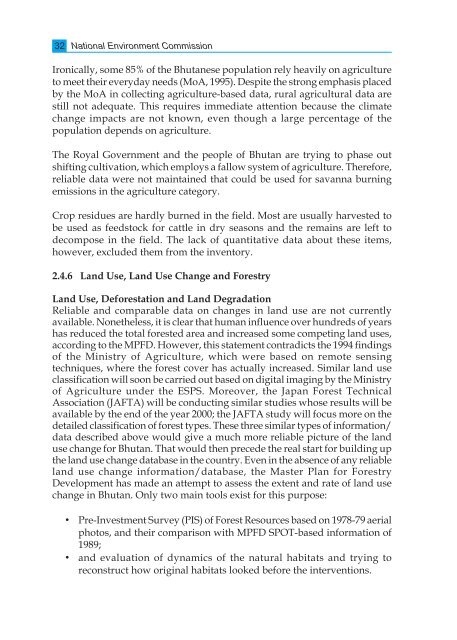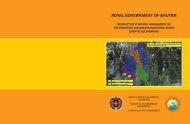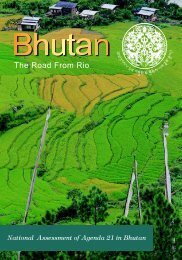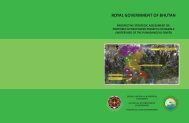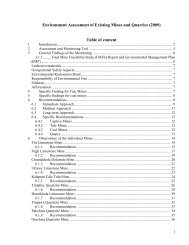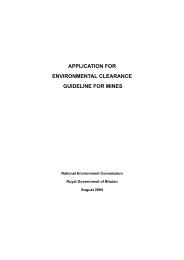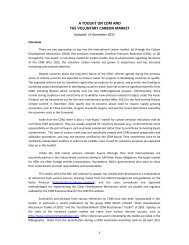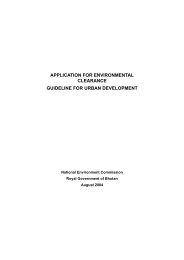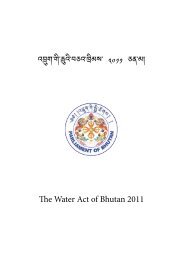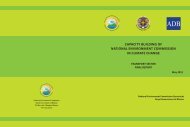Initial National Communication, under UNFCCC, September 2000
Initial National Communication, under UNFCCC, September 2000
Initial National Communication, under UNFCCC, September 2000
You also want an ePaper? Increase the reach of your titles
YUMPU automatically turns print PDFs into web optimized ePapers that Google loves.
32<br />
<strong>National</strong> Environment Commission<br />
Ironically, some 85% of the Bhutanese population rely heavily on agriculture<br />
to meet their everyday needs (MoA, 1995). Despite the strong emphasis placed<br />
by the MoA in collecting agriculture-based data, rural agricultural data are<br />
still not adequate. This requires immediate attention because the climate<br />
change impacts are not known, even though a large percentage of the<br />
population depends on agriculture.<br />
The Royal Government and the people of Bhutan are trying to phase out<br />
shifting cultivation, which employs a fallow system of agriculture. Therefore,<br />
reliable data were not maintained that could be used for savanna burning<br />
emissions in the agriculture category.<br />
Crop residues are hardly burned in the field. Most are usually harvested to<br />
be used as feedstock for cattle in dry seasons and the remains are left to<br />
decompose in the field. The lack of quantitative data about these items,<br />
however, excluded them from the inventory.<br />
2.4.6 Land Use, Land Use Change and Forestry<br />
Land Use, Deforestation and Land Degradation<br />
Reliable and comparable data on changes in land use are not currently<br />
available. Nonetheless, it is clear that human influence over hundreds of years<br />
has reduced the total forested area and increased some competing land uses,<br />
according to the MPFD. However, this statement contradicts the 1994 findings<br />
of the Ministry of Agriculture, which were based on remote sensing<br />
techniques, where the forest cover has actually increased. Similar land use<br />
classification will soon be carried out based on digital imaging by the Ministry<br />
of Agriculture <strong>under</strong> the ESPS. Moreover, the Japan Forest Technical<br />
Association (JAFTA) will be conducting similar studies whose results will be<br />
available by the end of the year <strong>2000</strong>; the JAFTA study will focus more on the<br />
detailed classification of forest types. These three similar types of information/<br />
data described above would give a much more reliable picture of the land<br />
use change for Bhutan. That would then precede the real start for building up<br />
the land use change database in the country. Even in the absence of any reliable<br />
land use change information/database, the Master Plan for Forestry<br />
Development has made an attempt to assess the extent and rate of land use<br />
change in Bhutan. Only two main tools exist for this purpose:<br />
• Pre-Investment Survey (PIS) of Forest Resources based on 1978-79 aerial<br />
photos, and their comparison with MPFD SPOT-based information of<br />
1989;<br />
• and evaluation of dynamics of the natural habitats and trying to<br />
reconstruct how original habitats looked before the interventions.


